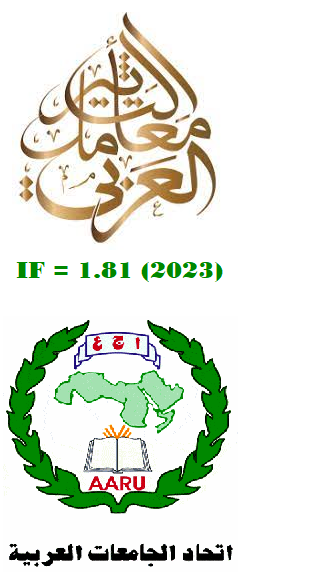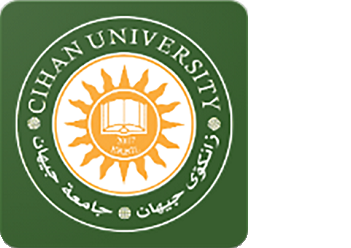The Effect of Learners’ Self- directed Study on Willingness to Communicate
Abstract
Self-directed study is a crucial need for learners to emphasize its central role in language education. Fostering and improving students’ ability to take initiative in their learning is considered crucial, for achieving success in both the present and future career. Additionally, recognizing the significance of being open to communication willingness to communicate works as a measure of learning, which can lead to attitudes, among students. This paper aims at finding out the relationship and the effect of learners’ self -directed motivation on willingness to communicate by answering the following questions. Is there any relationship between self-direction and willingness to communicate? Does self -direction have a positive impact on willingness? The paper examines willingness to communicate of 3rd grade students in English Department, from Collage of Basic Education at Salahaddin University –Erbil for the academic year 2022–2023. The participants are (60) students. The paper conducted through quantitative method. The data have been collected by a questionnaire and the tool adopted for analyzing the data is Statistical Package for the Social Science (SPSS). It is concluded that the most common factors that influence on students’ willingness to communicate are motivation, reliance, and anxiety about making mistakes and challenging situations. Another concluding point is that, students were unwilling to utilize only English while expressing an idea or discussing a matter with classmates or teachers. Moreover, Students referred to linguistic factors represented as indicative of their preference in taking more foreign courses and feeling comfortable in the classroom.
Downloads
References
Al-Faris, S.S. (2023). A psycholinguistic sight on autonomous learners in language learning. Cihan University-Erbil Journal of Humanities and Social Sciences, 7, 154-157.
Auliana, N., & Hadijah, S. (2022). A study on self-directed learning attitude of English education department students. TLEMC (Teaching and Learning English in Multicultural Contexts), 6, 96-106.
Azeez, I.B. (2023). Oral participation in class, problems, and solutions: A case study of the English department at Cihan University-Erbil. Cihan University-Erbil Journal of Humanities and Social Sciences, 7, 126-131.
Başöz, T., & Erten, İ.H. (2019). A qualitative inquiry into the factors influencing EFL learners’ in-class willingness to communicate in English. Novitas-ROYAL (Research on Youth and Language, 13, 1-18.
Chamani, S., Razi, A., & Xodabande, I. (2023). Motivational and emotional states in self-directed language learning: A longitudinal study. Discover Education, 2, 23.
Dörnyei, Z. (2005). The Psychology of the Language Learner: Individual Differences in Second Language Acquisition. New York: Lawrence Erlbaum.
Harini, E., Islamia, A.N., Kusumaningrum, B., & Kuncoro, K.S. (2023). Effectiveness of E-worksheets on problem-solving skills: A study of students’ self-directed learning in the topic of ratios. International Journal of Mathematics and Mathematics Education (IJMME), 1, 150-162.
Kang, S.J. (2005). Dynamic emergence of situational willingness to communicate in a second language. System, 33, 277-292.
Khaki, S. (2013). The relationship between learner autonomy and willingness to communicate (WTC) in Iranian EFL learners. International Journal of Applied Linguistics and English Literature, 2, 97-109.
Maclntyre, P.D., & Catherine, C. (1996). Personality, attitudes, and affect as predictors of second language communication. Journal of Language and Social Psychology, 15, 3-26.
Manipuspika, Y.S. (2018). Correlation between anxiety and willingness to communicate. Arab World English Journal, 9, 200-217.
Odanga, S.J.O. (2018). Strategies for increasing students’ self-motivation. Asian Research Journal of Arts and Social Sciences, 6, 1-16.
Oveisi, M., & Nosratinia, M. (2019). The relationship among EFL learners’ self-directed learning, resilience, and willingness to communicate. Journal of Language and Translation, 9, 77-91.
Pawlak, M., & Mystkowska-Wiertelak, A. (2015). Investigating the dynamic nature of L2 willingness to communicate. System, 50, 1-9.
Richmond, V.P., & Roach, D.K. (1992). Willingness to communicate and employee success in U.S. Organizations. Journal of Applied Communication Research, 20, 95-112.
Yashima, T. (2002). Willingness to communicate in a second language: The Japanese EFL context. The Modern Language Journal, 86, 54-66.
Zarrinabadi, N. (2014). Communicating in a second language: Investigating the effect of teacher on learners’ willingness to communicate. System, 42, 288-295.
Copyright (c) 2024 Zahraa S. Qarani

This work is licensed under a Creative Commons Attribution-NonCommercial-NoDerivatives 4.0 International License.
Authors who publish with this journal agree to the following terms:
1. Authors retain copyright and grant the journal right of first publication with the work simultaneously licensed under a Creative Commons Attribution License [CC BY-NC-ND 4.0] that allows others to share the work with an acknowledgment of the work's authorship and initial publication in this journal.
2. Authors are able to enter into separate, additional contractual arrangements for the non-exclusive distribution of the journal's published version of the work (e.g., post it to an institutional repository or publish it in a book), with an acknowledgment of its initial publication in this journal.
3. Authors are permitted and encouraged to post their work online (e.g., in institutional repositories or on their website) prior to and during the submission process, as it can lead to productive exchanges, as well as earlier and greater citation of published work (See The Effect of Open Access).









